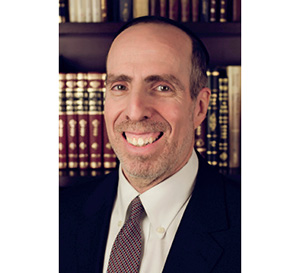
Part II
Last week we introduced our discussion of four typical questions posed regarding the differences between Sephardic and Ashkenazic practice. This week we continue with our second question:
Question #2: Who decided to make the break between Sephardic and Ashkenazic Jews?
The division onto Sephardic and Ashkenazic Jews was not a matter of choice. Rather it was the difficult circumstances of the galut (exile) that compelled Jews to scatter throughout the world. The Jews who would end up in lands on the Mediterranean Sea and the Middle East became known as Sephardic Jews, and the Ashkenazic Jews were those who wound up in France and Germany. The slight nuanced differences emerged mostly due to the slight differences between the batei midrash (houses of study) in the different lands. Rashi and the Baalei Tosafot had great impact on Ashkenazic practice, while the Rif and Rambam exerted profound influence over the Sephardic practice.
All the while, rabbanim were in contact with each other and learned each others’ Torah works. Rambam was familiar with the practices of Jews in Ashkenazic lands (see, for example, Hilchot Issurei Bi’ah 11:6-7), and the Baalei Tosafot cite the Rambam (see Tosafot to Brachot 44a s.v. Al HaEitz).
Most famously, of course, the Jewish people share one code of law, the Shulchan Aruch. While Ashkenazic Jews follow the Rama and Sephardic Jews follow the rulings of Rav Yosef Karo, we both share that one book as the authoritative work on Jewish practice. Thus, despite the many years of exile and many miles separating us, Torah leaders made heroic and successful efforts to unite us as one people.
Question #3: Is there is source in the Torah for variations in practice?
I heard none other than Rav Yosef Dov Soloveitchik share that he had been bothered by this question for many years. He said, though, that an answer may be found in the Ramban to Devarim 16:18 that indicates that each shevet needs its own supreme beit din. Ramban explains that each supreme beit din of each shevet is authorized to issue enactments/takanot for its shevet in accordance to its specific needs.
It would emerge then that some practices would vary amongst the shevatim, and that practice among the different tribes would not be uniform. We see, Rav Soloveitchik explains, that the Torah allows for a bit of variety in practice among the different groups of Jews. Rav Soloveitchik concluded that just as there were small differences in practice among the different shevatim, so too there are small differences among the different communities, such as the significant gap between Sephardic and Ashkenazic Jews.
Question 4: Will the differences between Sephardic and Ashkenazic Jews remain in Messianic times?
This is quite a challenging question to which to respond. On the one hand, the navi Yechezkel (Perek 37, which we read as a haftarah for Parshat Vayigash) envisions a time of a united Am Yisrael, all together under one king. However, this may refer only to political unity, as Yechezkel (37:22) specifically speaks of having one king for all Jews.
However, at the very end of Sefer Yechezkel the navi describes a vision of Yerushalayim at a time of the rebuilt third Beit Hamikdash, in which Jerusalem will be blessed with 12 gates. Each of these 12 gates is designated as corresponding to one of the 12 shevatim.
In other words, the division into 12 tribes will persist into the age of Mashiach. If the division into shevatim persists, it means that the divisions of the various groups within our people, which correspond to the different shevatim, will also persist into the Messianic era.
Of course, during the times of Mashiach, ahavat chinam, brotherhood and love, will prevail amongst our people. The different divisions of our nation will live in harmony and respect with one another. However, this need not be a source of tension if each group harbors respect and affection for the other groups.
Conclusion
Our division into Sephardic and Ashkenazic Jewry should not be seen as an unwanted relic and legacy of the many years of the exile. Rather it is a healthy expression of the legitimate variety within our nation. As long as Sephardic and Ashkenazic Jews maintain a commitment of reverence and esteem for each other, the divisions will not serve as a source of tension but rather it would be part and parcel of a truly Messianic vision for our people.
By Rabbi Haim Jachter
Rabbi Haim Jachter is the spiritual leader of Congregation Shaarei Orah, the Sephardic Congregation of Teaneck. He also serves as a rebbe at Torah Academy of Bergen County and a dayan on the Beth Din of Elizabeth.










